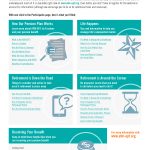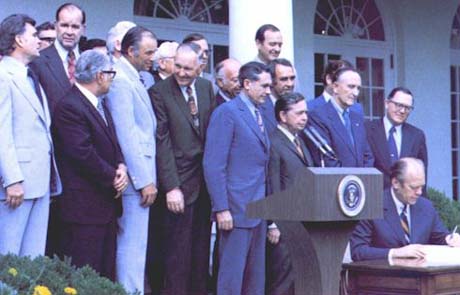Allegro
Understanding our pension
Part two in a series
Volume 122, No. 9October, 2022

Click to download a PDF with helpful links to our pension fund
By the Local 802 Communications Subcommittee (Deborah Assael, Bud Burridge, Sara Cutler, Martha Hyde, and Wende Namkung)
There has been and still is a lot of confusion over how our pension fund works and how pensions in general work. This series of articles is intended to examine the history of American pensions from the early retirement plans up to the American Rescue Plan Act of 2021.
A pension plan is one way to ensure wealth is carried to the end of a worker’s life, sometimes making it possible for that worker to pass wealth to offspring. Pension plans were not and still are not available to everyone. Private pension plans are often bargained with employers by unions, so a history of American pensions will hew closely to the checkered history of the American labor movement. In that history as in all American history, racism, sexism, elitism and political conflict are marbled throughout. This series will deal mostly with private, defined benefit pensions.
First, a quick primer for our newer members. Our pension plan is officially called the American Federation of Musicians and Employers’ Pension Fund. Every time you play a union gig that includes a pension provision, your employer makes a contribution on your behalf into the fund. Over time, you become “vested” in the pension plan, and when you retire, you may get a guaranteed monthly check . We’ll include more details in the future, but that’s how it works in a nutshell.
Second, here are some useful definitions:
Private “defined benefit” pension plan. The AFM pension plan falls into this category. These types of plans are usually bargained between an employer and a union. A prescribed amount of money is paid from a trust fund to the retired worker, usually in the form of monthly payments or annuities. The amount contributed to the fund by the employer varies according to what’s negotiated with the union but the amount of the monthly check received by the retiree does not vary. These plans are governed by the Employment Retirement Income Security Act and the Pension Benefit Guaranty Corporation.
“Defined contribution” plan. A 501(k) or 403(b) are examples of this type. Pre-tax funds (with set maximum limits on contributions) are deposited into an account for the worker. These funds can be invested in the stock market. Usually both the worker and employer contribute. Upon retirement, the amount paid out is what the account holds, which can vary depending on the market.
Public pension plan. If you’re a city or state worker, your pension may fall into this category. These pension plans are usually a defined benefit pension sponsored by the federal, state or municipal government. Often bargained between a union and the government. Not governed by the Employment Retirement Income Security Act or the Pension Benefit Guaranty Corporation but rather by acts of Congress, state legislatures or municipal governments.
A HISTORY OF PENSIONS IN THE UNITED STATES
PART TWO (1958-2001): the Civil Rights Movement and ERISA…to the dot com bubble and 9/11
The landmark Labor Management Relations Act (Taft-Hartley) of 1947 was followed up by a pair of laws requiring public disclosures of finances and administration. Section 302 of Taft-Hartley prohibited employers from giving money or anything of value to a union. The exceptions to this were “Taft-Hartley benefit plans,” such as Local 802’s health plan and the AFM pension plan.
The Welfare and Pension Plans Disclosure Act signed into law on August 28, 1958 by President Dwight Eisenhower required unions, employers and benefit funds to provide reports to the Department of Labor describing the benefits and providing accountability to the plan participants. Significant amendments to this legislation were signed into law in March 1962 by President John F. Kennedy, giving the federal government more interpretive, investigatory and enforcement powers over the reports and the funds themselves.
On September 14, 1959, President Eisenhower signed the Labor Management Reporting and Disclosure Act, known as Landrum-Griffin for its co-sponsors, Rep. Phillip Landrum (Democrat of Georgia) and Rep. Robert Griffin (Republican of Michigan). The law requires unions and employers to disclose financial transactions and administrative practices. It created the Office of Labor-Management Standards, which enforces Section 302 of Taft-Hartley among other things. Landrum-Griffin also sets standards for union officer elections.

Cesar Chavez

Dolores Huerta
The early 1960s saw a lot of political turmoil and a civil rights movement for Black people and others who sought treatment equal to what was already afforded to white men. In 1962, Cesar Chavez and Dolores Huerta founded the United Farm Workers of America. They joined striking workers of Filipino descent and organized successful boycotts and peaceful marches that resulted in state and federal legislation protecting agricultural workers. The pension plan for the UFW was founded 17 years later. That plan is a “Taft-Hartley” multiemployer plan, similar to the AFM pension plan. Employers contribute to a pool of assets overseen by a joint board of trustees made up of UFW members and their employers and it allows itinerant workers to accumulate pension benefits from multiple employers.
In 1964 President Lyndon Johnson signed the Civil Rights Act into law. This law prohibits racial discrimination in public places and repealed the idea of “separate but equal” that was the basis of the Supreme Court’s decision in Plessy vs. Ferguson. It prohibits federal contractors from discriminating in their hiring on the basis of race or sex. From 1961 to 1965, 28 percent of new federal jobs were filled by Black workers who, for the first time, had access to a government-sponsored, defined-benefit pension. Though the growth in the number of private pension plans slowed in the 1960s, the number of people covered increased because of increased employment in companies that offered pensions. About half of private sector workers — 23 million — were covered by a pension plan by the end of 1960 and that number continued to grow.

President Ford signed the ERISA law on Labor Day, 1974
While many workers had pension plans as part of their compensation packages they had no protection against the termination of a pension that lacked the funds to pay workers what they were owed. The best known example was the automaker Studebaker in South Bend, Indiana which closed in 1963 and left 7,000 workers with 15 percent of what they were owed and 3,000 with nothing. In 1967, Senator Jacob Javits (Republican of New York) proposed legislation that would prevent employers from abandoning their pensions. There was a years-long political struggle and NBC News released a documentary called “Pensions: The Broken Promise,” which won a Peabody award and increased public awareness of the problem. Because of Senator Javits’s relentless pursuit of pension protection the Employee Retirement Income Security Act (ERISA) was introduced in the House by Rep. John Dent (Democrat of Pennsylvania) on September 3, 1973. After a year-long process it was finally signed into law on Labor Day (September 2, 1974) by President Gerald Ford seven years after Senator Javits first introduced it.
ERISA requires extensive reporting and transparency from pension funds and makes a defined benefit irrevocable, thus guaranteeing the promised amount of the monthly payment will last for the rest of the retiree’s life. ERISA contains extensive rules about handling the assets of a plan, how much it must have in assets to meet its obligations, rules for vesting and for who participates in a plan. It created the Pension Benefit Guaranty Corporation, a government agency that collects premiums from pension plans and pays a minimum benefit to retirees whose pension plans fail. It set limits on the tax deductibility of employer contributions generally at the level where a plan had 140 percent of the assets needed to meet its obligations to its current and future retirees.
A follow-up to ERISA for multiemployer plans was the Multiemployer Pension Plans Amendment Act, which was introduced by Rep. Carl Perkins (Democrat of Kentucky) on May 3, 1979 and signed into law by President Jimmy Carter on September 26, 1980. The act requires employers who quit multiemployer plans to pay withdrawal liability. This prevents employers from leaving multiemployer pension plans and putting the remaining employers on the hook for the pension benefits of the abandoned current and future retirees.

On March 10, 2000 the dot com bubble burst, adding to a pension crisis
In 1984, President Ronald Reagan signed the Retirement Equity Act into law. This act was intended to foster more gender equity in pension benefits. It prevents the loss of vesting or credits (called a break) because of pregnancy or adoption and requires plans to pay a joint and survivor benefit which means a surviving spouse receives a percentage of the monthly benefit if the retiree dies. It requires permission from a spouse to waive the joint and survivor benefit but permits the benefit be paid to an alternate person if there is a qualified domestic relations order, often part of a divorce decree.
There were several tax reform acts passed in the late 1980s and early 1990s. They were the Tax Reform Act of 1986, the Omnibus Reconciliation Act of 1987 and the Omnibus Reconciliation Act of 1990. All were introduced by Democrats, two were signed by President Reagan and one by President George H.W. Bush. Legislative history suggests a concern that overfunded pension plans were becoming a way for employers to enrich themselves without paying capital gains taxes by encouraging asset reversions. This refers to an employer terminating an overfunded plan and reverting the excess back to itself without paying taxes on it. ERISA had already placed a cap on tax deductions for overfunded plans. The 1986 law added a 10 percent excise tax on non-deductible contributions. The 1987 law triggered the excise tax at 150 percent funded, in 1988 the excise tax went up to 15 percent and the 1990 law raised it as high as 50 percent.
This set the stage for funding disasters in the next century. The excise taxes discouraged employers from creating a “cushion” to protect a plan from becoming underfunded. In the late 1980s and 1990s pension plans were doing very well on the stock market, wages were up and the economy was humming along. The worry that employers would take advantage of the ability to revert excess assets to enrich themselves was a more immediate concern than the possibility plans would face higher liabilities than they could meet in the future.
One warning sign of an enormous future problem was the massive Teamsters Central States pension plan with its 400,000 participants. In 1982 Central States signed a consent decree to allow a consortium of banks to manage it because of a history of corruption. In 1984 the amount in pension benefits exceeded income and by the mid 1990s there were fewer active workers than retirees. The worker imbalance taken with the higher payout compared to income from contributions signaled very dark times ahead for Central States.
On March 10, 2000 the dot com bubble burst. Overvalued tech stocks caused a market crash and a bear market for the next two years, worsened by the September 11 attacks. Pension funds that had had healthy funding levels began to be underfunded from the losses on the market. The number of active workers in the poor economy failed to keep up with the number of retirees and as pension payouts continued despite less income from active workers, funds began to experience severe negative cash flows. The rise of funds’ liabilities, coupled with losses in assets, made them overly dependent on income from poorly performing investments.
In 2001 Rep. William Thomas, Republican of California introduced HR 1836, the Economic Growth and Tax Relief Reconciliation Act of 2001. It was signed into law by President George W. Bush on June 7 and was reviled by many as a tax cut for corporations, part of a policy called “supply side” economics. It removed the excise taxes and tax deduction restrictions on pension contributions by employers but given the bear market that was underway it was too little, too late for many funds.
Read Part 1: Early history of pension plans
Part 3 (coming soon): A deepening crisis leads to the American Rescue Plan Act (2001-2022)
This article was submitted by the Local 802 Communications Subcommittee, which includes as one of its members Martha Hyde, a trustee on the AFM pension fund. Martha invites members to contact her with general pension questions at earmar4@verizon.net. (Specific pension funds relating to your own pension situation must be directed to the pension fund.)

DID YOU KNOW? The pension plan that covers Local 802 musicians (and all AFM musicians) is called the American Federation of Musicians and Employers’ Pension Fund. At Local 802 and in Allegro, we abbreviate this to the AFM Pension Fund or the AFM-EPF. Want to know more? Watch the movie clip below:
DID YOU KNOW? The AFM Pension Fund is a separate entity from Local 802. Local 802 cannot answer specific pension questions that relate to your pension benefit. For all questions, including your current pension estimate, start here and also watch the movie clip below:
DID YOU KNOW? You can specify a beneficiary to your pension payments in the event of your death before you begin receiving your pension. Want to know more? Watch the movie clip below:
